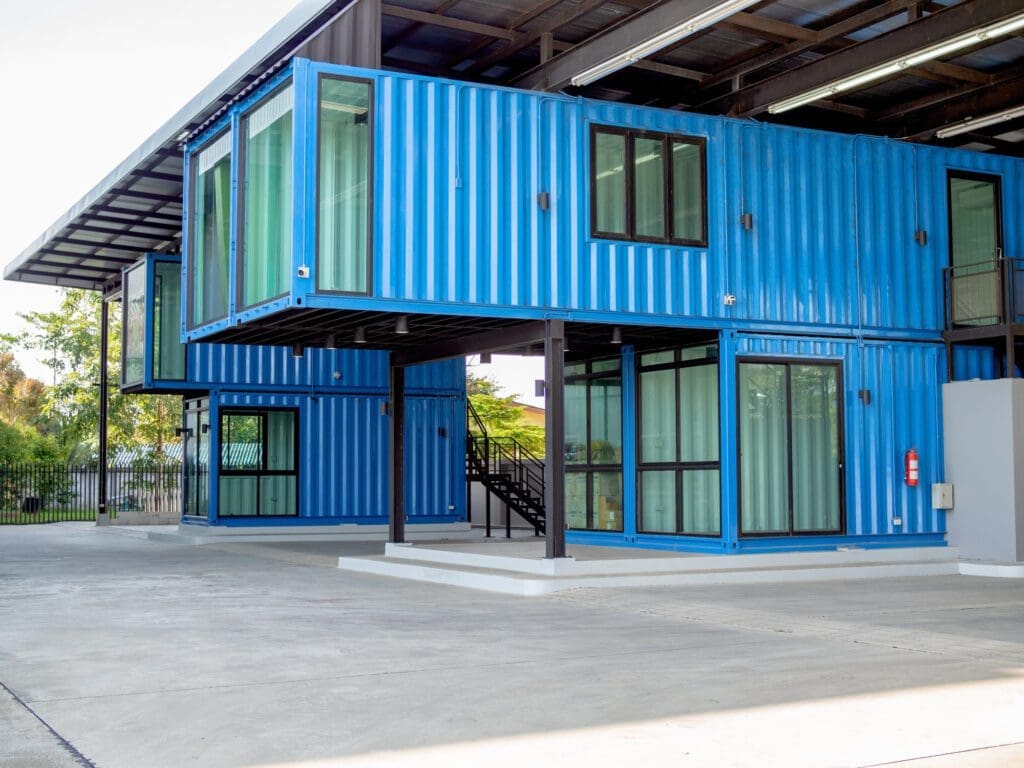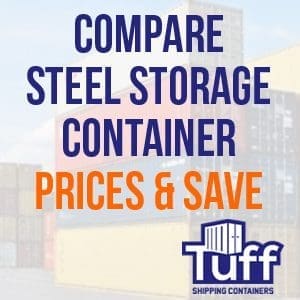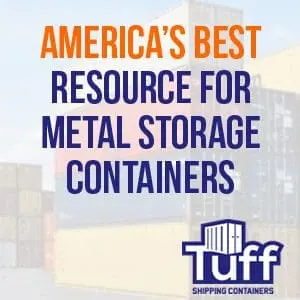
Exploring the Versatile Uses of Shipping Container Rentals
Shipping containers, once merely seen as a mechanism for transporting goods across oceans, have undergone a transformation in the last couple of decades. From pop-up shops to off-grid homes, the applications of shipping containers are as varied as they are ingenious. Renting shipping containers offers a sustainable, versatile, and cost-effective solution for a myriad of needs. Let’s dive deep into the multifarious uses of shipping container rentals.
Temporary Storage Solutions
One of the most straightforward and common uses for shipping container rentals is storage. Whether you’re undergoing a home renovation, relocating a business, or hosting a large event, these containers provide ample space to store equipment, furniture, and other belongings. They are weatherproof, ensuring the contents remain safe and dry.
Pop-Up Retail Spaces
Entrepreneurs and established businesses alike have leveraged shipping containers as temporary retail spaces. From seasonal stores to experimental brand extensions, these containers provide a unique aesthetic that attracts customers. They can be positioned in high-footfall areas, festivals, or markets, serving as an innovative selling point.
Event Stalls and Booths
For event organizers, shipping containers offer a unique way to set up booths, whether it’s for selling merchandise, or food, or serving as an information kiosk. Their sturdy structure and ability to be customized make them an ideal choice for events that require temporary setups.
Art Galleries and Exhibition Spaces
Artists and curators are always seeking new and exciting ways to display their works. Shipping containers can be transformed into avant-garde art spaces, complete with lighting, insulation, and partitions. They’re especially popular for outdoor art festivals or temporary exhibitions.
Construction Site Offices
Given their robust nature, shipping containers can be quickly converted into site offices for construction projects. They can be equipped with windows, doors, air conditioning, and other necessary amenities to create a comfortable workspace, even in the most challenging environments.




Emergency Housing
In the wake of natural disasters or during refugee crises, shipping containers can be repurposed into temporary housing units. They offer a faster solution than tent setups, providing more security, insulation, and durability.
Farming and Urban Agriculture
Shipping containers are making waves in the agricultural sector as well. They’re being used for hydroponic farming systems, where crops are grown without soil. This method allows for year-round cultivation in a controlled environment, perfect for urban settings where space is a premium.
Workshops and Studios
For artists, craftsmen, or hobbyists needing a private space, a shipping container can be the answer. Whether it’s for painting, sculpting, woodworking, or any other craft, these containers can be customized with shelving, tables, and other necessary amenities.
Mobile Medical Clinics
Healthcare organizations are utilizing shipping containers to establish mobile clinics, especially in remote areas. They can be equipped with the necessary medical equipment to offer primary care services, vaccinations, or even dental care.
Educational Spaces
In areas where building a permanent structure might be challenging, shipping containers are being used as classrooms or libraries. They provide a safe and conducive environment for learning, especially in regions affected by natural disasters or socio-political instability.
Shipping container rentals present a versatile and sustainable option for a host of applications. Their structural integrity, ease of customization, and the push towards upcycling have made them a popular choice across various sectors. Whether for business, humanitarian aid, or personal use, the possibilities with shipping containers are virtually limitless.



How Do Shipping Containers Compare to Traditional Construction?
In the past decade, the concept of utilizing shipping containers for more than just cargo transport has gained momentum. These steel boxes, once used solely for shipping goods across oceans, are now being repurposed into homes, offices, pop-up shops, and more. But how do they stack up against traditional construction methods? Let’s dive into a comparison.
1. Cost-Effectiveness
Shipping containers often present a more economical choice, especially for smaller-scale projects or when used in areas where construction costs are high. The initial purchase of a used shipping container can be significantly less than the cost of building from the ground up using traditional materials.
2. Speed of Construction
One of the most compelling reasons people turn to shipping containers is the speed at which they can be deployed. A basic container structure can be set up and made functional in a matter of days, as opposed to weeks or months for traditional construction. This is particularly advantageous for businesses looking to set up temporary locations or for disaster relief situations.
3. Eco-friendliness
Repurposing used shipping containers can be seen as a form of recycling. By giving these containers a second life, we are reducing the need for new construction materials, which, in turn, decreases the carbon footprint. Traditional construction, depending on the materials used, can have a more significant environmental impact.
4. Durability and Strength
Shipping containers are built to withstand harsh conditions at sea, making them incredibly durable. When maintained properly, these containers can last for decades. Traditional construction, while durable, might require more maintenance in the long run depending on the materials used.



5. Flexibility in Design
While shipping containers come in standard sizes, they can be stacked, combined, and customized to create a myriad of designs. This modular nature allows for a multidimensional approach to construction. Traditional buildings, while versatile in design, don’t offer the same plug-and-play modularity.
6. Insulation and Temperature Control
One challenge with shipping containers is insulation. Steel is a good conductor of heat, so containers can get very hot or cold, depending on the climate. However, with proper insulation, this issue can be mitigated. Traditional construction, with its wider range of materials, might offer better natural insulation.
7. Local Regulations and Zoning Laws
Here’s where traditional construction might have an edge. Many municipalities are still catching up to the idea of shipping container buildings. As such, you might face more stringent regulations or even resistance when attempting to secure permits. Traditional buildings, being more common, often have a clearer path through zoning and permitting processes.
While shipping containers offer a modern, quick, and often cost-effective alternative to traditional construction, they come with their own set of challenges. Potential investors should weigh the pros and cons, keeping in mind their specific needs, local regulations, and the intended use of the structure.




The Cost of Shipping Container Modifications: Making Your Container Functional
When delving into the world of shipping container constructions, it’s essential to account not just for the container’s initial cost but also for the modifications needed to transform it into a functional space. The expense and nature of these modifications can vary widely based on the intended use and desired amenities. Here’s a breakdown of common modifications and their associated costs:
1. Insulation
As mentioned earlier, insulation is crucial for maintaining a comfortable temperature within a shipping container, especially if it’s being used for living or working. There are different insulation methods available:
- Spray Foam Insulation: This is one of the most effective methods, providing both insulation and a vapor barrier. The cost can range from $2 to $5 per square foot.
- Panel Insulation: These are pre-made panels that can be fitted to the walls of the container. The cost typically ranges from $1.50 to $3 per square foot.
2. Electrical and Plumbing
If your container requires plumbing and electricity, you’ll need to account for these installations.
- Electrical: Wiring a container can cost anywhere from $50 to $100 per hour, depending on the electrician’s rates and the complexity of the project.
- Plumbing: The cost here can range from $1,000 to $4,000, depending on the number of plumbing fixtures and the complexity of the layout.
3. Windows and Doors
Adding windows and doors to your container allows for natural light and improved accessibility.
- Windows: A standard window installation can range from $500 to $1,500 per window, including the cost of the window itself and labor.
- Doors: Standard door installations might range from $100 to $500, but specialized doors like sliding or French doors can be higher.
4. Flooring
While shipping containers come with robust plywood floors, many choose to install new flooring for aesthetic or functional reasons. Costs can range from $2 to $10 per square foot, depending on the type of flooring chosen.
5. HVAC Systems
For containers used as living or working spaces, heating, ventilation, and air conditioning might be necessary. A basic HVAC system installation can start from $1,500 and go up, based on the unit’s size and capabilities.
6. Painting and Finishing
To give your container a polished look, or simply to protect it from the elements, you might want to paint its interior and exterior. Professional paint jobs can range from $1,000 to $3,000, depending on the container’s size and paint quality.
7. Specialized Modifications
These could include skylights, security systems, built-in furniture, or other custom features that cater to specific needs. The costs for these can greatly vary, but it’s good to have a buffer in your budget for such enhancements.
While a shipping container’s base cost might seem economical, the modifications needed to make it functional can add up. It’s essential to have a clear vision and budget for your project, seek quotes from professionals, and always account for unforeseen expenses that might arise during the modification process.



How Much Do Shipping Containers Cost?
Shipping containers have become increasingly popular for a variety of uses beyond their original purpose of transporting goods across oceans. With their adaptability, they’ve found their way into numerous architectural and storage applications. The cost of these versatile boxes varies depending on their size, condition, and the region in which you’re purchasing. Here’s an overview of the current pricing for different shipping container sizes.
10-Foot Containers
These are considered small in the world of shipping containers. They’re compact and ideal for storage or smaller modular construction projects.
- Used: A used 10-foot container can range from $2,000 to $3,000.
- New or One-Trip: These containers have typically made only one journey, ensuring they’re almost brand new. They can cost anywhere from $3,000 to $4,000.
20-Foot Containers
The 20-foot container is perhaps the most common size people are familiar with. It offers a balance of space and convenience, making it suitable for a broad range of applications.
- Used: A used 20-foot container typically costs between $2,500 and $4,000, depending on its condition.
- New or One-Trip: Purchasing a new or one-trip 20-foot container can range from $4,500 to $6,000.
40-Foot Containers
Offering double the length of the 20-foot model, the 40-foot container provides ample space for those larger projects or storage needs.
- Used: For a used 40-foot container, expect to pay between $3,500 and $6,000.
- New or One-Trip: A new or one-trip 40-foot container’s cost can vary from $6,500 to $8,000.
40-Foot High Cube Containers
These are similar in footprint to the standard 40-foot container but provide an extra foot of height, beneficial for specific storage needs or conversion projects.
- Used: These can be found in the price bracket of $4,000 to $6,500.
- New or One-Trip: Purchasing one of these in nearly new condition will range from $7,000 to $9,000.
Specialized Containers
There are also specialized containers, such as refrigerated units or those with side openings. These can vary significantly in price due to their specialized nature but expect to pay a premium compared to standard units.
Additional Factors Affecting Cost:
- Location: Depending on your location and proximity to ports, prices can vary. Generally, areas closer to ports might offer more competitive prices.
- Delivery: When budgeting, consider the delivery fees, which can range from $100 to $500 or more based on distance and accessibility.
- Condition: The price can be greatly influenced by the container’s state – whether it’s wind and watertight, its age, and how much wear and tear it’s experienced.
While shipping containers can be a cost-effective solution for various needs, it’s crucial to research and compare prices thoroughly. Inspecting a container in person before buying, when possible, can also ensure you get good value for your money.



Considerations When Modifying a Rental Shipping Container
When dealing with a rental shipping container, the process of modification can be a bit trickier than if you owned the unit outright. There are special considerations to bear in mind to ensure you stay within the terms of your rental agreement, maintain the structural integrity of the container, and ensure it’s returned in a condition that satisfies the rental company. Here are some pivotal points to ponder before making modifications to a rented container:
1. Rental Agreement Limitations
The foremost consideration is the rental agreement itself. Many rental agreements will have clauses that specifically address modifications. Some might allow for light modifications, while others might completely prohibit any changes. Make sure to read and understand the agreement’s stipulations before proceeding.
2. Duration of the Rental
If you’re only renting the container for a short period, it may not be financially viable or practical to make significant modifications. Weigh the costs and benefits in relation to the rental duration.
3. Structural Integrity
Even if you’re allowed to make modifications, it’s crucial to ensure that any changes don’t compromise the container’s structural integrity. This is vital not only for the safety of those using the container but also to ensure you don’t breach the rental agreement or face potential liabilities.
4. Reversibility of Modifications
Given that the container is a rental, any modifications might need to be reversed before returning the unit. When planning changes, consider how easy (and costly) it will be to undo them. Opt for non-permanent changes when possible. For instance, use clamp-on lighting instead of hardwiring lights, or utilize removable partitions instead of constructing permanent walls.
5. Permission and Communication
Always get written permission from the rental company before making any modifications. It’s a good practice to maintain open communication with them, discussing what you intend to do and ensuring it aligns with their guidelines.
6. Cost Implications
Remember, any investment you make in the rented container, including modifications, won’t lead to equity since you don’t own the container. It’s essentially a sunk cost, so think about whether the investment makes sense for your situation.




7. Maintenance and Upkeep
Some modifications may necessitate additional maintenance or increase the wear and tear on the container. Consider these implications, as you might be responsible for any damage or extra wear when returning the container.
8. Aesthetic versus Functional Changes
Differentiate between changes that are purely aesthetic and those that are functional. While aesthetic changes might make the space more pleasant, functional changes might be necessary for your operations. Balance the two, always keeping the rental nature of the container in mind.
9. Environmental Considerations
If you’re adding heating, cooling, or plumbing to the container, consider the environmental impact. Ensure any systems you install are efficient and don’t lead to wastage.
10. Local Regulations and Codes
Just because the container is a rental doesn’t mean local construction codes don’t apply. Always ensure that modifications, especially those related to electrical, plumbing, or structural changes, comply with local regulations.
While rental shipping containers offer versatile space solutions, modifying them requires careful planning and consideration. Always approach modifications with an understanding of the limitations and responsibilities of renting, and ensure you strike a balance between making the space fit for your needs and respecting the terms of your rental agreement.

Leave a Reply